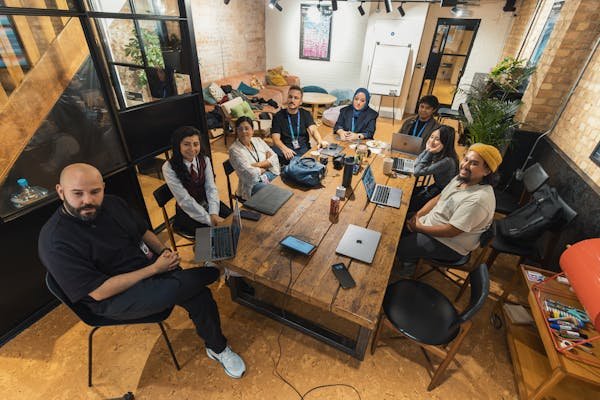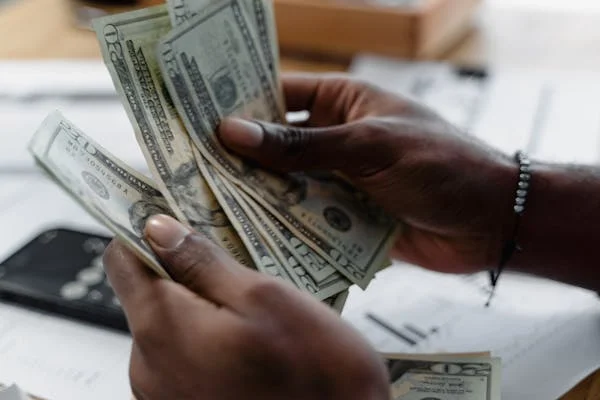Raising money is one of the first big hurdles every startup faces. And in today’s world, startups have more options than ever to get that first check. One funding tool that has exploded in popularity is the SAFE (Simple Agreement for Future Equity). But how many startups really use SAFEs for their first round? In this article, we are going to dive deep into the most important funding stats around SAFE usage and explain what they mean for you as a founder. Let’s jump right in.
1. Over 60% of early-stage startups in the U.S. use SAFEs for their first funding round
When we talk about startup funding today, SAFEs have become almost the norm. More than 60% of early-stage startups in the U.S. now prefer SAFEs for their very first fundraising round. That’s a huge shift from just a few years ago when priced rounds dominated the scene.
Why SAFEs Became So Popular
One big reason behind this shift is simplicity. Priced rounds can be complex, with detailed negotiations, legal work, and a heavy back-and-forth between founders and investors. SAFEs, on the other hand, offer a straightforward way to bring in money without all the hassle of valuing the company upfront.
Founders, especially those starting out, often don’t know how to properly value their companies. Using a SAFE lets them push that decision to a later date, usually at the next bigger funding round. This saves time and energy that can be better spent building the product and acquiring customers.
What This Means for Founders
If you’re planning your first round, choosing a SAFE can save you significant legal fees, reduce stress, and help you close funding faster. But you also need to be careful. Because SAFEs convert into equity later, if you don’t manage your cap table properly, you might end up giving away more of your company than you intended.
Actionable Tip: Always model different conversion scenarios when raising on SAFEs. Use a simple spreadsheet to simulate how much ownership you’ll give up at different future valuations.
2. Approximately 70% of YC-backed startups use SAFEs initially
Y Combinator, the world-famous startup accelerator, has been a big driver of SAFE adoption. Around 70% of YC-backed startups choose SAFEs for their first round.
The YC Influence
YC introduced the SAFE back in 2013 because they wanted a better way for early-stage companies to raise funds. They saw that traditional convertible notes were still too complicated and often led to confusion. SAFEs offered a clean, founder-friendly alternative.
When top-tier programs like YC set the trend, the wider startup world quickly follows. Many investors who frequently invest in YC companies have also become very comfortable with SAFEs, further boosting their use.
How You Can Leverage This
Even if you’re not a YC startup, you can benefit from this trend. Investors familiar with the YC model will likely be more open to using SAFEs. Plus, you can use YC’s publicly available SAFE templates to structure your round.
Actionable Tip: Download and study the YC SAFE templates. Customize them slightly if needed, but try to stick close to the original terms for easier negotiations.
3. SAFE usage grew by 4x between 2015 and 2022 among pre-seed startups
The growth of SAFE usage has been nothing short of explosive. Between 2015 and 2022, the number of startups using SAFEs at the pre-seed stage quadrupled.
A Changing Landscape
Back in 2015, many investors were still skeptical about SAFEs. They preferred traditional notes or priced rounds. But as more success stories emerged — companies that raised via SAFEs and went on to big exits — attitudes began to change.
By 2022, it was almost strange if a pre-seed round wasn’t a SAFE. Especially for smaller rounds, the efficiency and founder-friendliness made it the obvious choice.
Why This Matters for You
The startup ecosystem today favors speed. If you want to raise quickly and get back to building, using a SAFE is almost a no-brainer. But don’t mistake “easy” for “risk-free.” Make sure you understand how SAFEs impact your company’s ownership down the road.
Actionable Tip: Work with a startup-focused attorney who has closed many SAFE rounds. Their experience will help you avoid common pitfalls.
4. 85% of startups raising <$1M opt for SAFEs over priced rounds
When the fundraising amount is small — say, under $1 million — the overwhelming majority (85%) of startups choose SAFEs.
Why Size Matters
Smaller rounds often don’t justify the legal and administrative overhead of a priced equity round. Paying tens of thousands of dollars in legal fees to raise $500K simply doesn’t make sense. SAFEs let you raise smaller amounts more efficiently.
Plus, with SAFEs, you can raise money incrementally. You don’t need to close a big round all at once. You can take checks as they come, helping you build momentum.
Making It Work for You
If you plan to raise less than $1 million, using SAFEs will probably save you time and money. But make sure you group your investors under the same basic terms. Otherwise, managing multiple SAFE agreements can get messy later.
Actionable Tip: Use a “rolling close” strategy. Set a deadline (say, 3 months) for accepting SAFE investments. This keeps things organized while allowing flexibility.
5. About 55% of pre-seed rounds overall are closed via SAFEs
Today, around 55% of all pre-seed rounds — across all sectors — are closed using SAFEs.
The New Standard
At the pre-seed stage, founders usually have little more than an idea, a prototype, or an early version of their product. Valuing such an early business is extremely difficult. SAFEs provide a way to get money in the door without locking yourself into a premature valuation.
Investors at this stage are also often angels or micro-funds that are comfortable with flexible structures.
How You Should Think About It
You’re not just raising money — you’re setting the foundation for future rounds. A messy SAFE round now can make Series A negotiations painful later. Keep things clean, simple, and well-documented.
Actionable Tip: Maintain a real-time cap table that updates every time a new SAFE is issued. Tools like Carta or Pulley can automate this for you.
6. Around 90% of seed-stage deals at accelerators are conducted through SAFEs
Accelerators like Y Combinator, Techstars, and 500 Startups have embraced SAFEs to such an extent that around 90% of their seed-stage deals are now closed this way.
Accelerators and Efficiency
Accelerators aim to get startups funded fast. They don’t want companies spending precious weeks or months haggling over valuations and deal terms. SAFEs make it incredibly easy to hand startups the money they need so they can focus on building.
For startups, this accelerator environment means less friction. The accelerator wires the money, the startup signs a few pages, and it’s done. No long due diligence, no expensive lawyers dragging the process out.
What Founders Should Learn
If you’re applying to accelerators or working with one, understand that you’ll almost certainly be raising your initial seed funding through a SAFE. It’s important to familiarize yourself with how SAFEs work before you get to Demo Day.
Actionable Tip: Attend workshops or webinars that many accelerators offer on SAFE mechanics before starting your fundraising process. Preparation gives you the upper hand when investors start asking questions.
7. Startups in Silicon Valley use SAFEs 25% more than startups elsewhere
Startups based in Silicon Valley are about 25% more likely to use SAFEs than startups from other regions.
The Silicon Valley Culture
Silicon Valley thrives on speed, innovation, and flexibility. Founders and investors here are often more willing to embrace new ideas and unconventional approaches, including funding tools like SAFEs. The familiarity of both founders and investors in Silicon Valley makes SAFE rounds almost a default.
Outside Silicon Valley, traditional priced rounds and convertible notes still hold a larger share, mainly due to more conservative legal advice and investor caution.
How Geography Can Influence You
If you’re outside Silicon Valley, you might find some investors still prefer traditional structures. That’s okay. Your job is to educate them. Share resources, explain the benefits, and help them get comfortable with SAFEs.
Actionable Tip: When pitching investors outside of tech hubs, prepare a simple one-pager explaining why you’re raising on a SAFE and what protections it offers investors. This shows professionalism and builds trust.
8. 76% of first-time founders prefer SAFEs to priced equity rounds
First-time founders overwhelmingly (76%) prefer SAFEs for their first fundraising round.
Why New Founders Love SAFEs
For many new founders, fundraising is a daunting task. They don’t yet have the legal experience or the advisor network to confidently manage a full priced round. SAFEs reduce the learning curve.
With a SAFE, founders don’t have to immediately worry about valuation, complex term sheets, board seats, or liquidation preferences. They can stay focused on what matters most — building their product and finding product-market fit.
Key Lessons for First-Time Founders
Choosing a SAFE doesn’t mean you should be casual about your fundraising. It’s critical to understand terms like valuation caps, discounts, and conversion triggers. Even a “simple” SAFE round can create big headaches if not managed properly.
Actionable Tip: Before offering SAFEs to investors, practice explaining how they work in simple terms. If you can make it clear for yourself, you’ll make it clear for your investors too.
9. About 40% of Series A-bound startups raised initial funding through SAFEs
Nearly 40% of startups that make it to a Series A raised their initial funding through SAFEs.
SAFEs Are Just the Beginning
Just because you start with SAFEs doesn’t mean you stay there forever. Many companies raise their first few hundreds of thousands or even a million dollars via SAFEs, and then graduate to priced rounds once they hit major milestones.

This gradual evolution means founders can defer valuation discussions until they have real traction — revenue, growth metrics, partnerships — that justifies a strong valuation.
How to Transition Successfully
Going from a SAFE round to a priced Series A can be smooth if you plan carefully. Keep meticulous records of your SAFEs, communicate clearly with investors, and avoid issuing wildly different terms across different SAFEs (like drastically different valuation caps).
Actionable Tip: Before kicking off your Series A, do a full SAFE audit. List out all your SAFEs, the caps, discounts, and any pro-rata rights. Share this summary proactively with Series A investors to build credibility.
10. 80% of startups with less than $5M valuation cap use SAFEs for the first round
Startups setting valuation caps under $5 million are using SAFEs at a rate of 80%.
Valuation Caps and Early-Stage Risk
A valuation cap is the maximum price an investor will pay when their SAFE converts into equity. For early-stage startups with little or no revenue, keeping the cap reasonable is key to attracting investors.
A cap under $5M signals that you’re aware of your company’s stage and are offering investors a fair deal. This builds goodwill and makes it easier to close your round.
Strategies for Setting Your Cap
Setting your cap too high can scare away good investors. Setting it too low can hurt you later by giving away too much equity. Look at comparable companies in your space. Talk to friendly investors and mentors. Choose a cap that reflects both your promise and your risks.
Actionable Tip: If you’re not sure what cap to choose, pick a “cap and discount” SAFE — offering investors either a price discount or the valuation cap, whichever is better for them. This flexibility can help close tough investors.
11. Nearly 50% of startups using accelerators use SAFEs for initial capital
When startups go through accelerators, about 50% of them raise their first real outside capital using SAFEs.
Why Accelerators and SAFEs Go Hand-in-Hand
Accelerators push startups to move fast. They often have Demo Days where startups pitch to dozens, sometimes hundreds, of investors at once. SAFEs allow startups to capitalize on that momentum quickly. Instead of spending months negotiating a priced round after Demo Day, founders can start closing checks the same week.
SAFEs remove friction not only for founders but also for investors who want a simple and fast way to get in on promising deals. This structure perfectly suits the high-energy, high-velocity environment of an accelerator.
How You Can Use This to Your Advantage
If you’re entering an accelerator, plan your fundraising strategy in advance. Have your SAFE documents ready before Demo Day. Make it as easy as possible for investors to say “yes” by removing unnecessary steps.
Actionable Tip: After Demo Day, follow up with every investor within 48 hours. Attach your SAFE documents directly in your emails to minimize back-and-forth and keep momentum high.
12. SAFEs represent 65% of instruments used for first rounds under $500K
For startups raising less than $500,000, SAFEs make up about 65% of the funding instruments used.
Small Rounds Need Fast Tools
When you’re raising $500K or less, every dollar counts. Legal fees for a priced round could eat up 10% or more of your raise — a terrible use of scarce resources. SAFEs eliminate much of that waste. They are quick, cheap, and simple.
Small rounds are also often made up of smaller checks from angels, friends, and family. These investors appreciate the simplicity of a SAFE, especially if they are not seasoned venture capitalists.
Maximizing Your Small Raise
To make the most out of a smaller SAFE round, keep terms simple and consistent across all investors. Don’t create confusion by offering different discounts or caps to different people. Uniformity helps you move faster and keeps everyone aligned.
Actionable Tip: Before opening your round, create a FAQ sheet explaining your SAFE terms in simple, non-technical language. Send this to potential investors along with your pitch.
13. 70% of founders cite “speed and simplicity” as the reason for choosing SAFEs
Speed and simplicity are the top reasons cited by 70% of founders who choose SAFEs for their first round.
Founders Value Focus
When you’re just starting out, the last thing you want is to get bogged down in complicated fundraising processes. Every week you spend negotiating is a week not spent building your product, talking to users, and growing your business.
SAFEs allow you to maintain that crucial focus. You can raise the money you need, keep legal expenses low, and get back to work without distraction.
How to Use Speed and Simplicity to Win
Investors appreciate founders who move quickly and know what they want. Presenting a clean, simple SAFE can leave a strong impression. It shows you’re organized, decisive, and serious.
Actionable Tip: Practice delivering your fundraising ask in under two minutes — what you’re raising, on what terms, and why now is the right time. Clarity breeds confidence.
14. Only 20% of startups raising their first capital use convertible notes over SAFEs
Only about 20% of startups now choose convertible notes instead of SAFEs for their first funding round.
Why Convertible Notes Are Losing Ground
Convertible notes were once the standard tool for early-stage fundraising. But they come with downsides. They have maturity dates, meaning you could theoretically be forced to repay the money if you don’t raise a priced round in time. They also often include interest rates, adding another layer of complexity.
SAFEs eliminate those risks. No maturity dates. No interest rates. Just a promise that the investment will convert into equity later under pre-agreed conditions.
Knowing When to Consider a Note
There are still rare cases where a convertible note might make sense. For example, some institutional investors may insist on them for better legal protections. But for most early-stage founders, SAFEs are the better choice.
Actionable Tip: If an investor pushes hard for a note, ask them clearly why. Understanding their concerns will help you either adjust your SAFE or negotiate a fair note structure without compromising your startup.
15. Venture-backed startups report a 60% initial SAFE usage rate before priced rounds
Among startups that eventually raise venture capital, 60% report that they used SAFEs for their very first funding.
SAFEs as the Stepping Stone
Raising venture capital is a long journey. It often starts with small rounds funded by friends, family, angels, or early believers. SAFEs make these early rounds easy to close.
Later, once you’ve hit key milestones — like revenue, growth, or traction — you can move into a priced Series A or Series B. Starting with a SAFE lets you build momentum without overcomplicating your company’s structure at the outset.
Setting Yourself Up for Success
The best founders think several moves ahead. They understand that today’s SAFE round is laying the foundation for tomorrow’s Series A. Keep your SAFE terms clean, use standardized documents, and avoid giving away hidden special privileges that could trip you up later.
Actionable Tip: Before raising a larger priced round, hire a startup-specialist lawyer to run a full audit of all your SAFEs. Cleaning up any issues early can save you major headaches during due diligence.
16. SAFEs are used in 75% of pre-seed rounds that close in less than 3 months
When a pre-seed round wraps up in under three months, chances are it used SAFEs. About 75% of those fast rounds rely on this simple funding instrument.
Speed Kills (In a Good Way)
Raising fast isn’t just about getting money in the bank. It’s about preserving momentum. The faster you close your round, the faster you can build your product, hire your team, and grow your user base. SAFE agreements are perfect for this because they eliminate time-consuming steps like setting a company valuation or dealing with complicated legal negotiations.

When founders use SAFEs, they can move from “meeting an investor” to “money wired” in just a few days. This speed can be the difference between seizing an opportunity and missing it.
Tips for Closing Fast
To close your round quickly, treat your fundraising like a product launch. Prepare all your documents in advance. Make your SAFE terms non-negotiable or offer very little room for debate. Frame the investment opportunity as a limited-time window to create urgency.
Actionable Tip: Set a “soft close” date when talking to investors. For example, say, “We’re aiming to close $300K by the end of next month.” This simple statement gives people a deadline and drives faster decisions.
17. Startups in fintech and SaaS sectors use SAFEs 68% of the time for early rounds
If you’re building a fintech or SaaS startup, you’re right at home with SAFEs — about 68% of startups in these sectors use them for their first rounds.
Why Tech Loves SAFEs
Fintech and SaaS businesses often have long product development cycles before revenue kicks in. Trying to assign an early valuation is tricky because there’s little financial history to base it on. SAFEs allow these startups to raise critical early capital without forcing investors to guess the value prematurely.
Tech investors are also more accustomed to modern funding tools like SAFEs. They’re familiar, they’re fast, and they don’t scare people who understand how startups grow and mature.
How Sector Trends Impact Your Strategy
Knowing that your peers are using SAFEs can give you extra confidence when approaching investors. It also sets expectations. If you’re raising in fintech or SaaS and propose a complex priced round right away, you might look inexperienced or out of step.
Actionable Tip: In your pitch materials, mention casually that you’re raising via a SAFE and that this is standard practice in your industry. This subtle positioning helps normalize your ask and keeps the conversation focused on your company, not your deal structure.
18. Women-led startups reportedly use SAFEs 10% more often than male-led startups
Interesting fact: women-led startups use SAFEs about 10% more often than startups led by men.
A Tool for Efficiency and Equality
Women founders, facing longer fundraising cycles and tougher investor scrutiny, often prioritize tools that simplify and streamline the fundraising process. SAFEs, by eliminating drawn-out negotiations, allow women founders to close faster and maintain momentum.
This is particularly important because statistics show that women still raise less capital on average compared to male founders. Every efficiency gain counts.
How Founders Can Embrace This Advantage
Regardless of gender, using a SAFE lets you stay in control of your fundraising timeline. It empowers you to set clear terms, close quickly, and move on to building your company without unnecessary distractions.
Actionable Tip: If you’re a woman founder raising your first round, highlight the efficiency of your fundraising strategy when pitching. Investors love founders who can execute quickly and decisively.
19. 40% of startups using SAFEs also raise second rounds without moving to priced equity
Nearly 40% of startups that start with a SAFE raise a second SAFE round before ever doing a priced round.
The Power of Staying Flexible
Instead of jumping straight into a priced round after their first SAFE, many startups choose to stack another SAFE or two. This flexibility allows them to extend their runway, hit key milestones, and ultimately command a much stronger valuation when they finally price their shares.
Stacking SAFEs isn’t without its risks — too many SAFEs with different terms can complicate your cap table. But when managed well, it’s an incredibly powerful tool to grow on your terms.
How to Stack SAFEs Smartly
If you decide to raise multiple SAFE rounds, try to keep the valuation caps steadily increasing. This rewards early investors for their risk and reflects your company’s progress without needing to renegotiate every time.
Actionable Tip: Create a simple visual timeline showing each SAFE round, the cap at each round, and how much you raised. Share this with prospective investors in later rounds to demonstrate transparency and professionalism.
20. The median SAFE round size is $450,000 for first-time fundraises
When you look across the board, the typical (median) amount raised through a SAFE for a startup’s first funding is about $450,000.
Understanding the Numbers
Half of SAFE rounds are larger than $450K, and half are smaller. This makes $450K a good benchmark when planning your own raise. If you’re targeting $400K–$500K, you’re right in the middle of the pack.
This amount typically provides enough runway for a small team to build a minimum viable product (MVP), find early customers, and prepare for a larger priced seed round.

How to Size Your Round Correctly
Don’t fall into the trap of raising as much money as possible just because you can. Raise what you need to get to your next meaningful milestone — whether that’s revenue, user growth, or a finished product.
Actionable Tip: Build a 12-month financial plan before setting your fundraising target. Include key expenses like salaries, product development, and marketing. Then add a small buffer (10%-15%) for unexpected costs. Use this plan to justify your SAFE round size when pitching.
21. Only 15% of founders using SAFEs later regret not doing a priced round first
Interestingly, only 15% of founders who raised using SAFEs say they regret not going for a priced round instead.
Why Most Founders Are Happy With SAFEs
The majority of founders who use SAFEs find them to be the right choice, especially at the earliest stages. SAFEs allow them to move fast, minimize legal fees, and avoid the tricky conversation about valuation when their company is little more than an idea.
By the time they are ready for a priced round, they often have stronger metrics, customer traction, or a more developed product — all things that lead to a higher valuation. In short, they sell less equity for more money later.
The small group that regrets using SAFEs usually falls into two categories: those who issued too many SAFEs with wildly different terms, or those who let their early SAFE investors accumulate too much ownership through multiple rounds.
How to Make Sure You Don’t Regret It
The key to avoiding SAFE regret is to be strategic. Keep your cap table clean, your terms consistent, and always be thinking a few rounds ahead.
Actionable Tip: Before issuing your first SAFE, write down what success looks like for your next two rounds of funding. Having that roadmap will help you structure your SAFE round wisely and prevent future headaches.
22. Startups raising with SAFEs close their first rounds 30% faster than priced rounds
Startups that use SAFEs to raise their initial capital close about 30% faster compared to those that attempt a traditional priced round.
The Speed Advantage
Speed matters. Every week spent fundraising is a week you’re not talking to customers, building product, or improving operations. SAFEs let you cut through the noise and get funding done.
Without the need for valuations, complex negotiations, board seats, or lawyer-heavy processes, SAFE rounds move with incredible efficiency. Investors can review a few pages, say yes, and wire the funds without drawn-out due diligence.
How to Capitalize on This Speed
Use the time saved through faster fundraising wisely. Double down on hitting growth milestones, customer acquisition, or product development. Investors love to see progress between fundraising rounds, and moving quickly gives you a critical head start.
Actionable Tip: Set yourself a personal deadline for closing your round. Communicate that deadline to investors in a positive way: “We’re looking to wrap up this round by the end of next month.” Deadlines drive action.
23. Over 95% of YC’s pre-seed investments use SAFEs as the funding instrument
At Y Combinator, over 95% of their pre-seed investments are done using SAFEs.
Setting the Standard
Y Combinator invented the SAFE, so it’s no surprise they use it extensively. But the scale of its adoption shows just how effective and trusted this instrument has become.
When a leading accelerator like YC, known for producing unicorns and IPOs, overwhelmingly uses SAFEs, it sends a strong signal to the broader startup community that SAFEs are not just acceptable — they’re smart.
YC’s approach also shows that simplicity and speed do not have to come at the cost of quality companies or great outcomes.
How You Can Apply This Insight
Even if you’re not a YC company, you can borrow their playbook. Using SAFEs shows that you understand modern fundraising norms, especially when dealing with early-stage investors who are familiar with Silicon Valley best practices.
Actionable Tip: In conversations with investors, feel free to mention that YC startups typically raise via SAFEs. It subtly frames your approach as aligned with the best in the business.
24. Nearly 60% of VCs report SAFEs as the most common form of initial investment paper
Today, nearly 60% of venture capitalists report that the most common form of paperwork they see at the earliest stages is the SAFE.
Investors Have Evolved Too
While some traditional investors were initially hesitant about SAFEs, most modern VCs have come around. They recognize that SAFEs are efficient for both sides. They allow for quicker deals and lower legal costs, which benefits the entire startup ecosystem.
More importantly, VCs know that SAFEs give them a foot in the door with promising companies at the earliest stages without getting bogged down in valuation debates.

What Founders Need to Understand
Because many investors are now comfortable with SAFEs, there’s no need to apologize or feel defensive about using them. The key is to be professional, clear, and organized when presenting your SAFE round.
Actionable Tip: Always have your SAFE paperwork prepared and ready to send immediately after an investor says yes. The smoother you make the process, the more likely you are to close quickly.
25. On average, 2-3 SAFEs are issued per startup in their first fundraising round
When startups raise their first round using SAFEs, they typically issue between two and three different SAFEs to different investors.
Managing Multiple SAFEs
Issuing two or three SAFEs is very manageable, but it still requires careful attention. Each SAFE could have slightly different terms, such as different valuation caps or discounts. If you’re not careful, you could end up with a confusing cap table that turns off later investors.
Ideally, you want all your SAFEs to be on the same or very similar terms. This keeps things simple and makes the eventual conversion into equity straightforward.
Keeping It Clean
Having a clean, simple set of SAFE agreements will make your life much easier when you raise your next round. Messy cap tables and inconsistent agreements can slow down due diligence and even scare away potential investors.
Actionable Tip: At the start of your raise, set standard terms (cap and/or discount) and stick to them as much as possible. Politely but firmly tell investors that the terms are standard for all participants.
26. Startups choosing SAFEs raise initial rounds at a 15% lower legal cost
Startups that use SAFEs for their first fundraising rounds typically spend about 15% less on legal fees compared to those that do traditional priced rounds.
Cutting Costs Where It Matters
In the early days of a startup, every dollar matters. Legal fees for a priced round can be shockingly high, often running into tens of thousands of dollars. SAFEs dramatically simplify the paperwork, reducing the number of hours lawyers need to review documents. Fewer hours equals smaller bills.
The savings can then be redirected into more productive areas like hiring engineers, launching marketing campaigns, or paying for essential tools.
How to Maximize Your Legal Efficiency
Even though SAFEs are simpler, it’s still important to have a good lawyer review your agreements — but keep the engagement focused and efficient. Choose a lawyer experienced with startup fundraising and set clear expectations about scope and cost upfront.
Actionable Tip: Ask your lawyer to quote a flat fee for reviewing your SAFE documents rather than billing by the hour. Flat fees encourage efficiency and help you manage cash flow better.
27. Over 85% of startups using SAFE documents use the YC standard SAFE templates
More than 85% of startups who choose SAFEs are using the standard templates published by Y Combinator.
Why Reinvent the Wheel?
YC’s SAFE templates are battle-tested and familiar to most investors. They cover the key points investors care about, without adding unnecessary complexity. By using the standard templates, startups signal that they are serious, trustworthy, and efficient.

Customizing SAFE templates too heavily often causes red flags for investors. It forces them to involve their own lawyers, slows down deals, and can erode trust.
How to Use Templates the Smart Way
Stick as closely as possible to the standard YC templates. If you need to make modifications, keep them minimal and easy to explain. Always be transparent about any changes you make.
Actionable Tip: Download the latest versions of the YC SAFE templates directly from the Y Combinator website before starting your fundraising. Ensure you are using the most up-to-date and investor-friendly versions.
28. Non-U.S. startups are 25% less likely to use SAFEs compared to U.S. startups
Outside the United States, startups are about 25% less likely to use SAFEs as their funding instrument.
Different Legal Landscapes
One reason for this difference is that not all countries have legal systems that easily accommodate SAFEs. In some regions, local investors are more familiar with convertible notes or direct equity investments. Legal norms, tax treatments, and regulatory frameworks vary widely across countries.
However, SAFEs are gradually gaining traction worldwide as more international investors get comfortable with U.S. startup practices.
How Founders Outside the U.S. Can Adapt
If you’re a non-U.S. founder and want to use SAFEs, be prepared to educate your investors. You may also need to tweak the documents to comply with local laws. Working with an international startup law firm can help navigate these differences.
Actionable Tip: When targeting international investors, offer a short explainer document alongside your SAFE paperwork, describing how the SAFE works and why it is standard in Silicon Valley. Education builds trust and speeds up decisions.
29. Founders using SAFEs avoid company valuation negotiations 70% of the time
Founders who use SAFEs avoid getting into early company valuation negotiations about 70% of the time.
Avoiding the Valuation Trap
Valuing an early-stage startup is one of the hardest — and most stressful — parts of fundraising. With little revenue, few customers, and lots of uncertainty, any number you pick will feel arbitrary.
SAFEs allow you to defer that decision until your company is more mature. Investors still get protection through valuation caps or discounts, but you avoid locking in a low valuation that could hurt you later.
How to Keep the Focus on the Big Picture
When talking to investors, steer conversations toward your vision, your team, and your traction — not your valuation. Using a SAFE with a reasonable cap lets both sides move forward without getting bogged down in difficult or speculative debates.
Actionable Tip: When pitching, explain clearly that the SAFE structure is designed to align everyone’s incentives by letting your next priced round determine the true value of the company.
30. Only 10% of first SAFE rounds involve negotiation of terms beyond valuation cap and discount
In about 90% of first SAFE rounds, the only terms negotiated are the valuation cap and discount. Only 10% of deals involve more complex negotiations.
Keep It Simple, Win Faster
The beauty of the SAFE is in its simplicity. Most investors are only concerned about two numbers: the valuation cap (which limits the maximum price they’ll pay) and the discount (which rewards them for investing early).
Trying to add too many special rights, side letters, or complicated clauses defeats the purpose of using a SAFE. It slows you down and introduces unnecessary risk.
Sticking to cap and discount negotiations keeps deals clean, protects your cap table, and allows you to fundraise faster without giving away hidden rights you’ll regret later.

How to Manage Investor Expectations
Set the tone early. Frame your round as being offered under “standard SAFE terms,” with only cap and discount open for discussion. This helps investors know what to expect and discourages unnecessary haggling.
Actionable Tip: Include a short note in your pitch deck that says: “Raising on a standard SAFE with [X] cap and [Y]% discount.” This sets expectations early and saves time in discussions.
Conclusion
The world of startup fundraising is moving fast, and SAFEs have clearly taken the lead for early-stage startups. They offer simplicity, speed, and flexibility — all critical elements when you’re trying to build something from scratch.





















